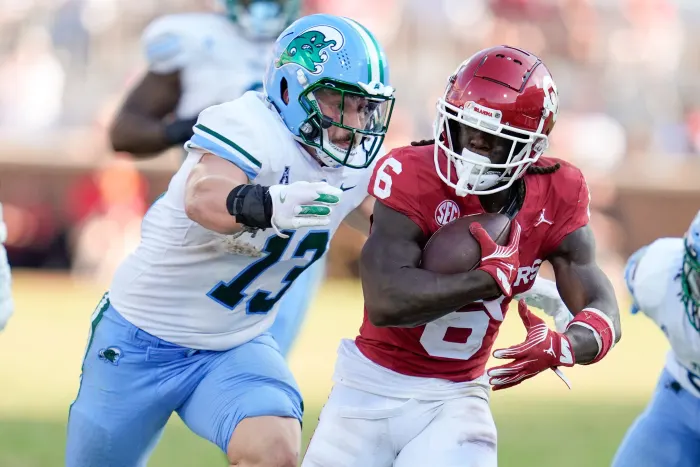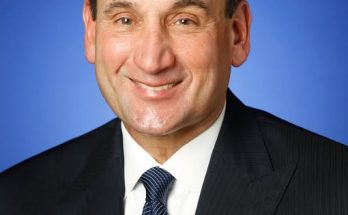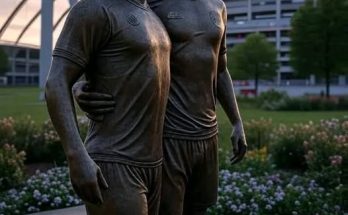The Oklahoma Sooners are about to embark on their second season in the Southeastern Conference—a conference known for its brutal depth, marquee programs, and relentless weekly challenges. Their inaugural SEC campaign provided a glimpse into just how demanding the transition can be, and as they look to solidify their standing among college football’s elite, the stakes are even higher in year two. For Brent Venables and his staff, the pressure is on to prove that Oklahoma is not only capable of competing but ready to thrive in the SEC. The roster is brimming with talent, but if the Sooners hope to rise above the competition and contend for a conference title—or at least a playoff berth—three players must have breakout or stabilizing seasons in 2025. These are not necessarily the most talented or high-profile names on the roster, but rather the essential pillars whose individual success will be a determining factor in Oklahoma’s overall trajectory this fall.
The first key player who must step up in a massive way is quarterback Jackson Arnold. The former five-star recruit and heir apparent to Dillon Gabriel, Arnold now finds himself fully in command of the offense after a season of learning and limited in-game experience. The spotlight in Norman burns hotter for quarterbacks than perhaps any other position in the country, and Arnold is tasked with leading the Sooners into the SEC gauntlet without a safety net. The expectations are immense—not just because of his recruiting pedigree but also because of what Oklahoma loses with Gabriel’s departure. Gabriel was not only productive but experienced, calm under pressure, and the vocal leader of the offense. Arnold will need to be all of that and more.
His arm talent is unquestioned. Arnold has a natural ability to make off-platform throws, stretch the field vertically, and move the pocket when things break down. What remains to be seen is how he responds to adversity when he’s facing the likes of Georgia, Alabama, LSU, and Texas in an unforgiving SEC schedule. Composure, decision-making, and pre-snap recognition will all be tested in ways he hasn’t experienced before. His physical gifts are immense, but if Oklahoma is to contend, Arnold has to be more than just talented—he must be consistently effective. A stat line that mirrors what Bo Nix or Jayden Daniels produced in 2023 would vault Oklahoma into a serious threat for a top-tier bowl. If Arnold struggles, however, the team’s ceiling drops significantly. He is the linchpin to the Sooners’ success on offense.
While Arnold’s emergence is vital, the second most essential player is running back Gavin Sawchuk. In the SEC, running the football effectively is not just a bonus—it’s a necessity. Oklahoma’s offensive scheme demands balance, and that balance hinges on whether Sawchuk can evolve into a workhorse back capable of thriving against elite defenses. He showed flashes of brilliance late last season, particularly during the final month when he started to emerge as the feature back. His vision, acceleration, and home-run potential were on full display, but now consistency is the next step. Sawchuk will need to shoulder a much larger load this year, and the pressure to deliver week in and week out will be immense.
The importance of Sawchuk’s role is amplified by Oklahoma’s offensive identity. The Sooners want to establish the run to open up their play-action and RPO game. When the ground game is effective, it not only keeps opposing defenses honest but also gives Arnold manageable down-and-distance scenarios. That is crucial for a young quarterback still adjusting to the speed and complexity of SEC defenses. In many ways, Sawchuk’s productivity will directly impact Arnold’s comfort level and efficiency. If he’s able to consistently move the chains, pick up chunk yardage, and control the tempo, the entire offense becomes more dangerous. Beyond the box score, his ability to pass protect and be a viable option in the screen game also makes him a three-down back the Sooners desperately need. If Sawchuk takes that next step, Oklahoma’s offense could hum with rhythm and explosiveness reminiscent of its Big 12 glory days.
Defensively, no player will be more important than linebacker Kip Lewis. As Venables continues to retool and reshape Oklahoma’s defense in his image, Lewis finds himself at the center of that transformation—literally and figuratively. Linebackers are the heart of Venables’ defensive philosophy, and Lewis has the talent and instincts to be the quarterback of the defense. His sideline-to-sideline range, quick diagnosis skills, and ability to play in space make him an ideal fit for what the Sooners want to do schematically. But talent alone isn’t enough. Lewis must now become a leader, a communicator, and an enforcer.
In the SEC, where nearly every team features a potent rushing attack and dynamic tight ends, linebackers are constantly tested. Lewis will need to be strong against the run, agile enough to cover tight ends and backs in the passing game, and vocal enough to align the defense correctly in pressure situations. With Danny Stutsman off to the NFL, the leadership void in the linebacker room is significant. Lewis isn’t just replacing a productive player; he’s inheriting the role of emotional and strategic anchor. His development into a high-IQ, all-conference-level linebacker could be the single biggest factor in Oklahoma’s defensive improvement. If he becomes the glue that holds the defense together, it allows others—like edge rushers PJ Adebawore and Rondell Bothroyd—to pin their ears back and attack the quarterback.
Beyond the individual impact of these three players, there’s a broader narrative at play. Oklahoma is attempting to rewrite its perception in the SEC. For years, detractors questioned whether the Sooners could handle the weekly grind and physicality of college football’s toughest conference. Last season offered both validation and critique. There were moments of resilience, promise, and grit—but also lapses in execution, physical mismatches, and depth concerns. Year two is about bridging that gap. Having the right personnel is one thing; getting peak performance out of them is another. Arnold, Sawchuk, and Lewis represent not only three talented individuals but three focal points in the Sooners’ blueprint for SEC relevance.
It’s also important to consider the domino effect that their success could have across the roster. If Arnold is firing on all cylinders, wide receivers like Nic Anderson, Jalil Farooq, and transfer Deion Burks can become matchup nightmares. If Sawchuk is pounding defenses on the ground, it opens the door for play-action passes and zone-read keepers to become lethal weapons. If Lewis is anchoring the defense and orchestrating Venables’ complex schemes, it allows the defensive line to be more aggressive and the secondary to play freer and faster.
The 2025 season is not just another chapter in Oklahoma football—it’s a defining one. The program has national title aspirations and a fanbase that expects results, not excuses. The patience shown in year one of SEC play is wearing thin. The margin for error in this conference is microscopic, and the consequences of underperformance are swift. The coaching staff has had a full offseason to evaluate, adjust, and re-emphasize the physical and mental demands of the SEC. Now, it comes down to execution.
Arnold, Sawchuk, and Lewis are each at pivotal points in their careers. For Arnold, it’s about proving he’s the next great Oklahoma quarterback and not just another highly-rated recruit. For Sawchuk, it’s about becoming the kind of dependable SEC back that wears down defenses and controls games. And for Lewis, it’s about stepping into a leadership void and commanding the respect of his peers while anchoring the middle of the defense.
The Sooners have the infrastructure, tradition, and talent to succeed. What they need now is for their most critical pieces to rise to the occasion. If these three players perform at or above expectations, Oklahoma could very well take the next step toward becoming a legitimate contender in the SEC and beyond. If they falter, the program risks remaining in the middle of the pack, fighting for relevance in a league that shows no mercy.
Oklahoma’s road ahead is not easy, but it is navigable. With Arnold leading the offense, Sawchuk stabilizing the run game, and Lewis setting the tone on defense, the Sooners have a legitimate shot to exceed expectations. Their success—or lack thereof—will be a clear indicator of whether Oklahoma is ready not just to exist in the SEC, but to thrive.



